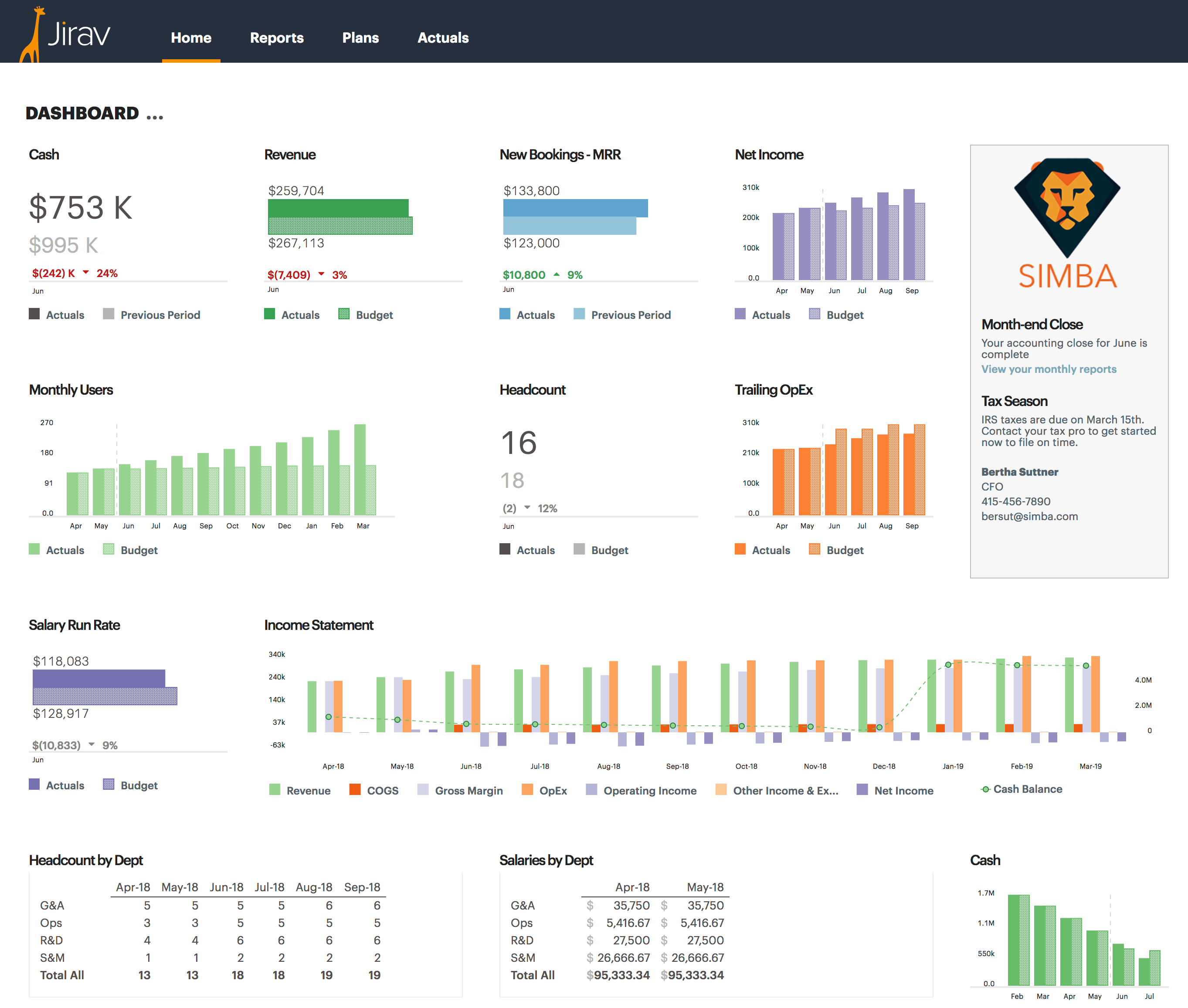The terms "projection" and "forecast," while often used interchangeably, have distinct meanings and significance that impact decision-making and strategic analysis. Understanding how they differ is crucial, as it shapes the way businesses approach their financial planning endeavors.
While projections are often utilized as a foundational blueprint for future initiatives and growth trajectories for long-term strategic planning, forecasts are instrumental for short-term decision-making, offering insights into immediate action that can steer the course of a business.
This article sheds light on the pivotal differences between projections and forecasts, highlighting their unique roles in enhancing strategic financial planning.
Projection vs. Forecast: What to Know
While similar, projection and forecast have different implications depending on the context. Here's what you need to know about the two terms:
Projection
A projection is a financial statement about the future based on current trends, historical data, and assumptions. Projections generally assume that the existing patterns and trends will continue into the future without significant changes. They are often used in scenarios where there is a high degree of certainty that the conditions influencing the future will remain relatively stable.
Projections are typically based on internal data, historical trends, and management's expectations. They are often used for creating a baseline scenario that reflects the company's anticipated performance under certain assumptions. Projections are usually tied to the annual budgeting process and can provide a benchmark against which actual performance can be measured.
Key points about projections
- Assumptions: Projections heavily rely on assumptions about the future. These assumptions are often based on historical data, statistical trends, and expert judgment.
- Stability: Projections work best when the factors influencing the future are expected to remain stable. They are less suitable for situations with high uncertainty or rapid changes.
- Long-Term Planning: Projections are often used for long-term strategic planning, where a more comprehensive view of potential future outcomes is needed.
- Limited Variability: Projections may not capture sudden disruptions, unexpected events, or significant shifts in the environment.
Forecast
A forecast is a prediction of future conditions, events, or outcomes based on available information and data. Forecasts are more dynamic and adaptive in nature. They take into account both historical data and current trends to predict future financial performance. Unlike projections, forecasts might attempt to capture potential changes or disruptions in the future.
Using a financial forecasting tool, forecasts are updated regularly (monthly, quarterly) to reflect the changing business environment and new information. Forecasts are used to assess how the company is likely to perform in the short to medium term, based on the latest available data.
Key points about forecasts
- Data Analysis: Forecasts involve a more in-depth analysis of data and factors that can influence the future. These might include statistical models, time series analyses, and scenario planning.
- Uncertainty Consideration: Forecasts can take into account uncertainties and potential changes in the environment, making them more adaptable to various future scenarios.
- Short-Term Focus: Forecasts are often used for short-term planning and decision-making, as they are more reliable when applied to relatively near-future scenarios.
- Risk Management: Because forecasts can incorporate various scenarios and potential disruptions, they’re useful for risk management and identifying possible challenges.
Industry Examples
Across diverse industries, anticipating the financial future is key for informed decision-making. Here's how companies across industries use projections and forecasts:
Life Sciences
In the life sciences industry, a projection might involve estimating future demand for a specific medication based on current prescription rates and demographic trends. This projection assumes that the underlying factors affecting medication usage, such as population growth and disease prevalence, will remain stable.
On the other hand, a forecast in the life sciences industry could involve predicting the potential impact of emerging medical breakthroughs on patient outcomes. This forecast would consider factors like clinical trial results, regulatory changes, and technological advancements to provide a more comprehensive view of potential future scenarios.
SaaS (Software as a Service)
For projecting sales in a SaaS business, a projection could entail estimating the number of new subscribers over the next quarter based on historical subscription growth rates. This projection assumes that the company's marketing efforts and product offerings will continue to attract customers at a similar rate.
Conversely, a forecast in the SaaS industry might involve predicting the market share of a new software product by considering factors like competitive analysis, customer feedback, and evolving industry trends. This forecast would provide insights into potential market adoption and competitive challenges.
Investment Management
In investment management, a projection could involve estimating the future value of a portfolio based on historical performance and market trends. This projection assumes that the investment landscape will continue to follow similar patterns.
However, a forecast in this industry might involve predicting the potential impact of economic events, like interest rate changes or geopolitical shifts, on different asset classes. This forecast would consider a range of possible scenarios to guide investment strategies and risk management decisions.
CPG/eCommerce (Consumer Packaged Goods/eCommerce)
For a CPG company operating in the eCommerce space, a projection could involve estimating the sales of a specific product based on historical online purchase trends. This projection assumes that consumer preferences and online shopping behaviors will remain consistent.
In contrast, a forecast in this industry might focus on predicting the growth of a new product category by considering factors like consumer demographics, marketing campaigns, and emerging consumer trends. This forecast would offer insights into potential market expansion and consumer demand shifts.
Manufacturing
In the manufacturing sector, a projection could entail estimating the production output for a specific product based on historical manufacturing rates and order patterns. This projection assumes that production processes and demand factors will remain steady.
A forecast in the manufacturing industry might involve predicting the impact of supply chain disruptions, technological advancements, and market shifts on production capacity. This forecast would provide guidance on adapting manufacturing strategies to address potential challenges and opportunities in a dynamic environment.
Combining Projections and Forecasts in FP&A
Using projections and forecasts together in Financial Planning and Analysis (FP&A) can provide a comprehensive and dynamic view of a company's financial performance and potential future outcomes.
Projections are typically created at the beginning of the financial planning cycle for the upcoming year based on strategic plans, historical performance, and expected market conditions. These projections serve as the starting point for the budgeting process. Using projections as a foundation to develop the annual budget provides a target against which actual performance can be measured.
As the year progresses, regularly update the forecasts to incorporate the most recent data and information. Compare the forecasts to the budget and identify any significant variances. This allows for early identification of deviations from the original plan and facilitates timely, corrective decision-making.
Using both projections and forecasts to run scenario analyses allows businesses to test different assumptions and variables and understand how changes in the business environment could impact financial performance.
This helps in assessing risks and making decisions to mitigate potential negative outcomes. Furthermore, consider implementing advanced strategies like forecasting a balance sheet, which involves predicting the financial position of a company at a specific point in the future. This requires a comprehensive understanding of the company's financial structure, including assets, liabilities, and equity.
One effective technique is the utilization of rolling forecasts. In this approach, the forecast horizon is continuously updated. For instance, if the initial forecast covered a 12-month period, each month, the oldest month's data is replaced with the latest, extending the forecast timeline. This dynamic method ensures that the forecast remains up-to-date and adaptable to evolving circumstances.
Regularly compare actual performance against both the projections and the most recent forecasts. Analyze the reasons behind any significant deviations. This analysis helps in understanding whether deviations are due to changes in the business environment, internal factors, or external factors.
Share both projections and forecasts with stakeholders like executives, department heads, and investors. Clear communication about the assumptions, methodologies, and potential risks associated with projections and forecasts is crucial for effective decision-making.
Incorporating both projections and forecasts into your FP&A process allows for a holistic view of the company's financial health and performance. It enables better agility in responding to changes and uncertainties in the business landscape while staying aligned with the company's strategic goals.
If you're looking to enhance your company's FP&A process by seamlessly integrating projections and forecasts, Jirav's advanced FP&A software is designed to help you make the process more efficient and more accurate than ever before.
With Jirav, you can easily create detailed projections based on historical data, market trends, and strategic objectives. Our forecasting capabilities allow you to adapt to changing circumstances in real-time, ensuring that your predictions remain relevant and insightful. So book a demo with us today, and stay ahead of the curve with data-driven decisions that drive your company's success.












